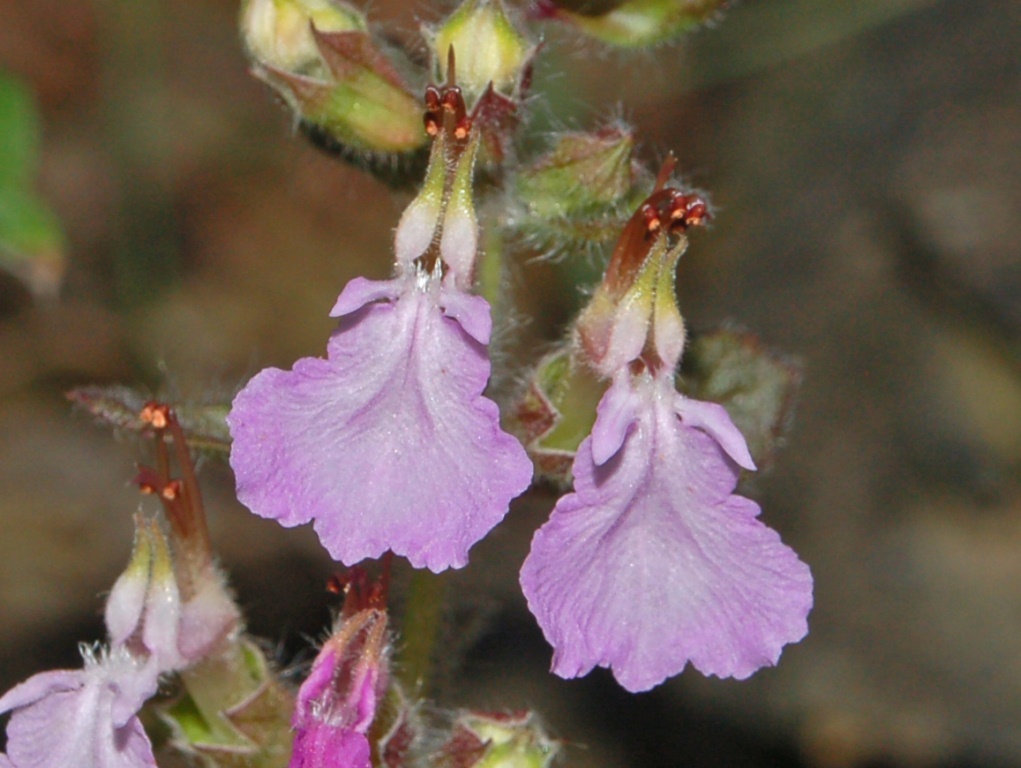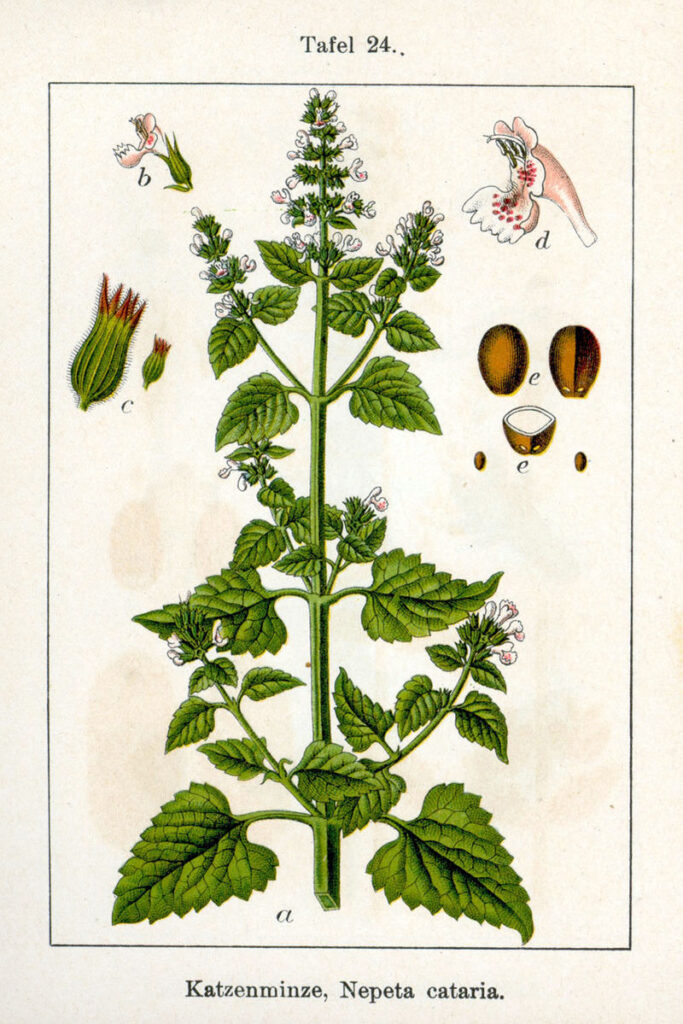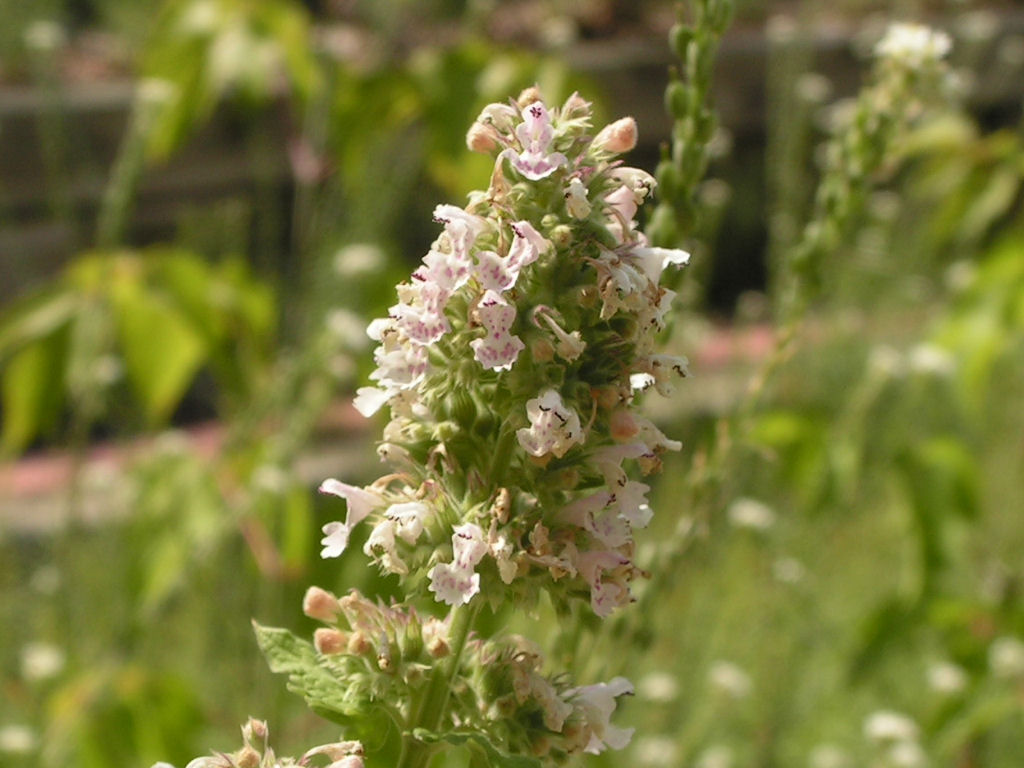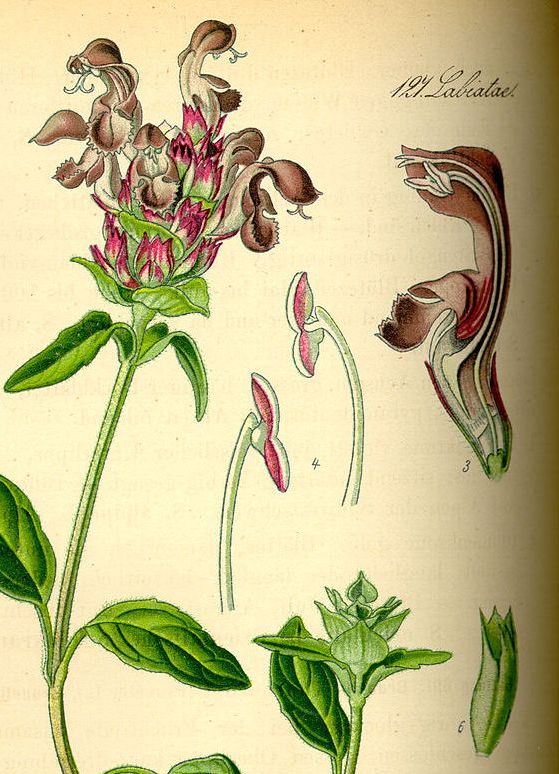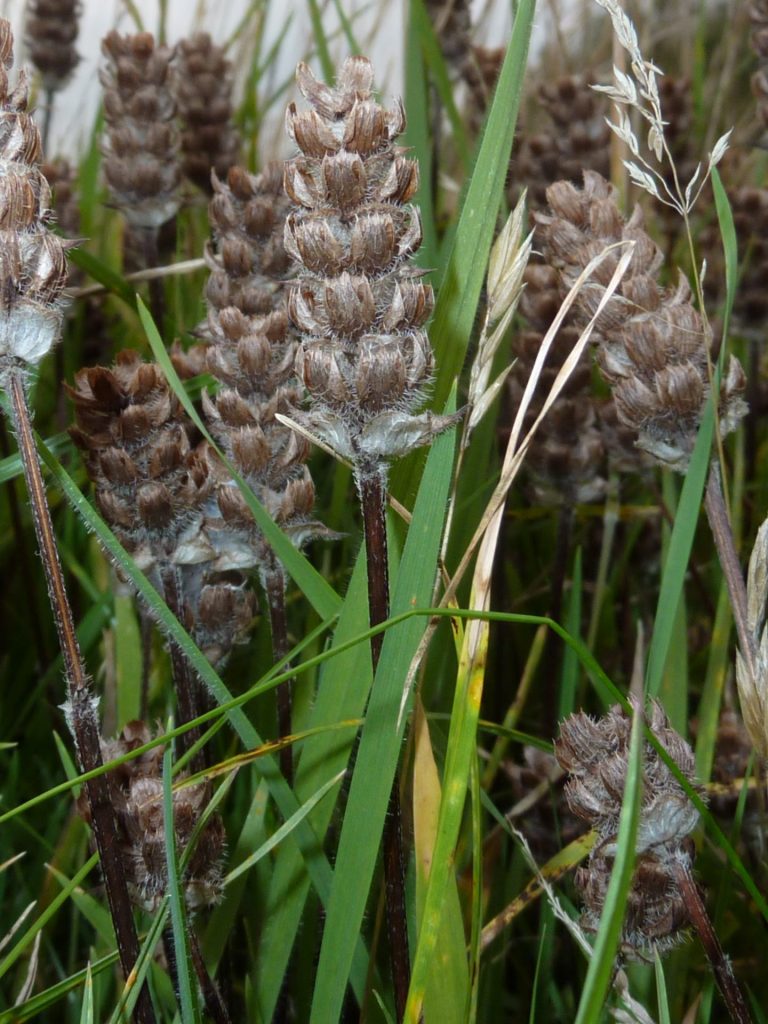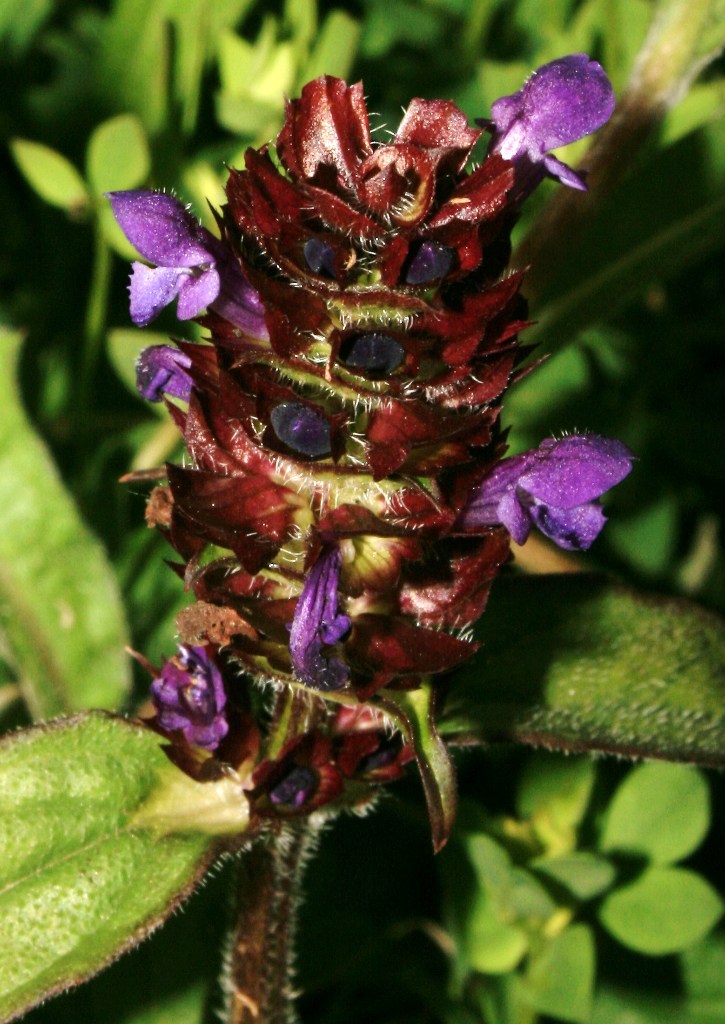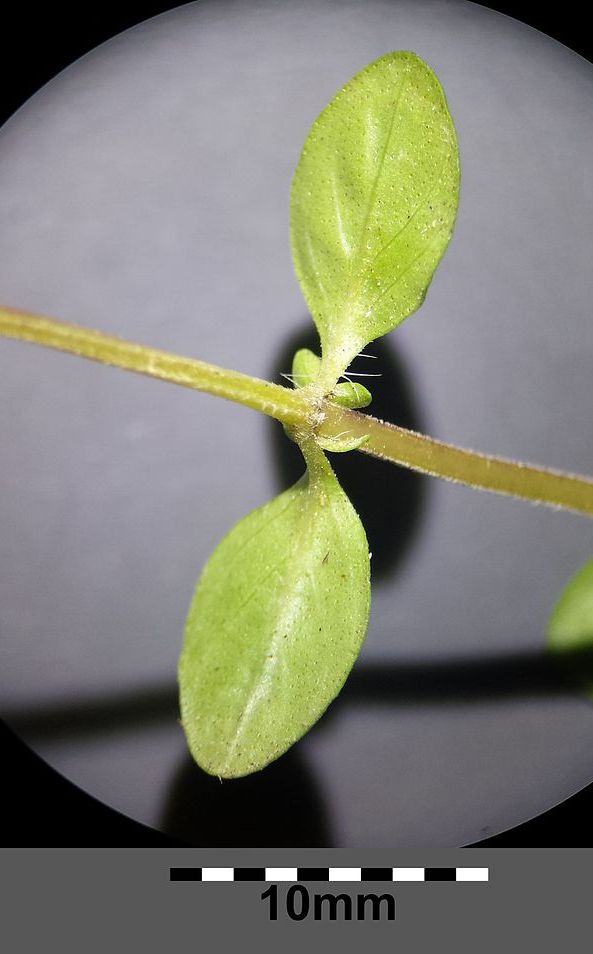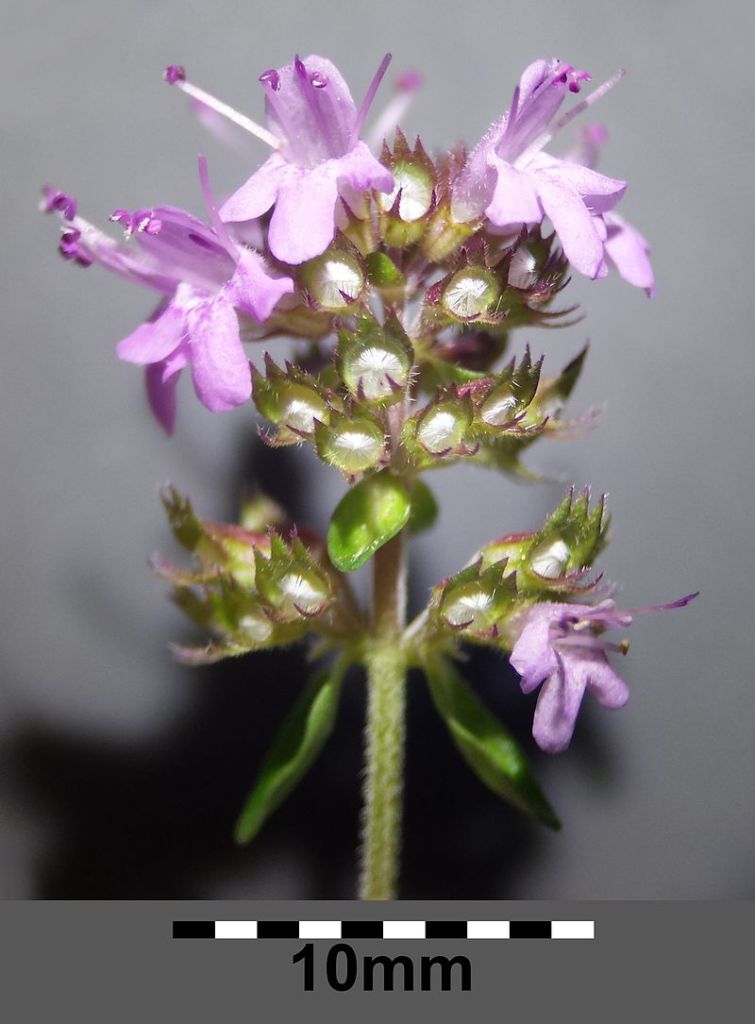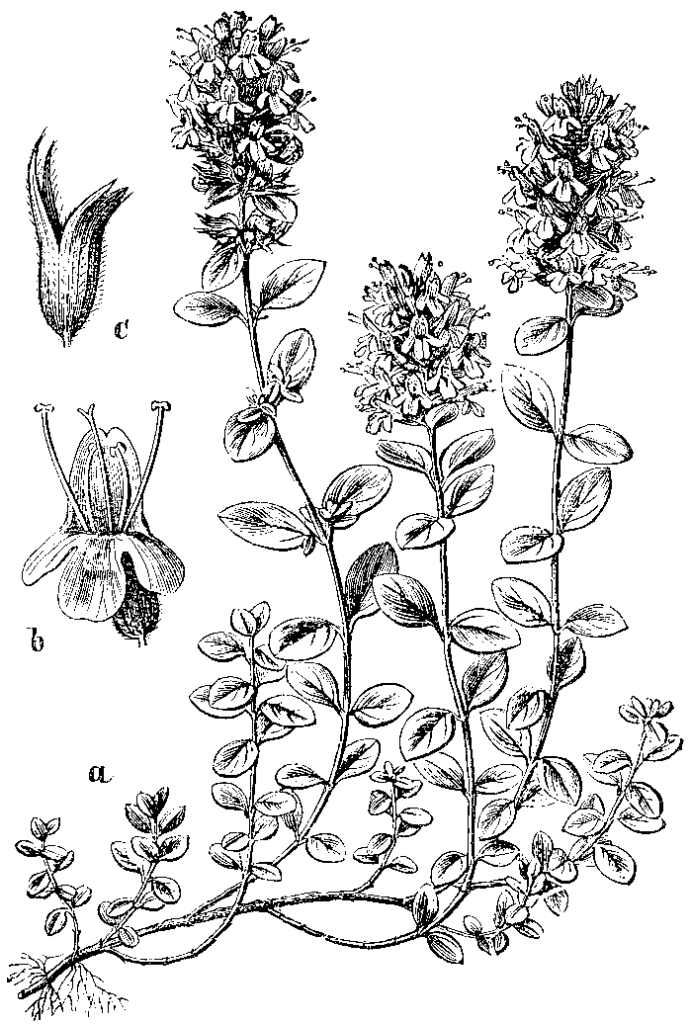Last week was part 1 of the Lamiaceae or Deadnettle family.
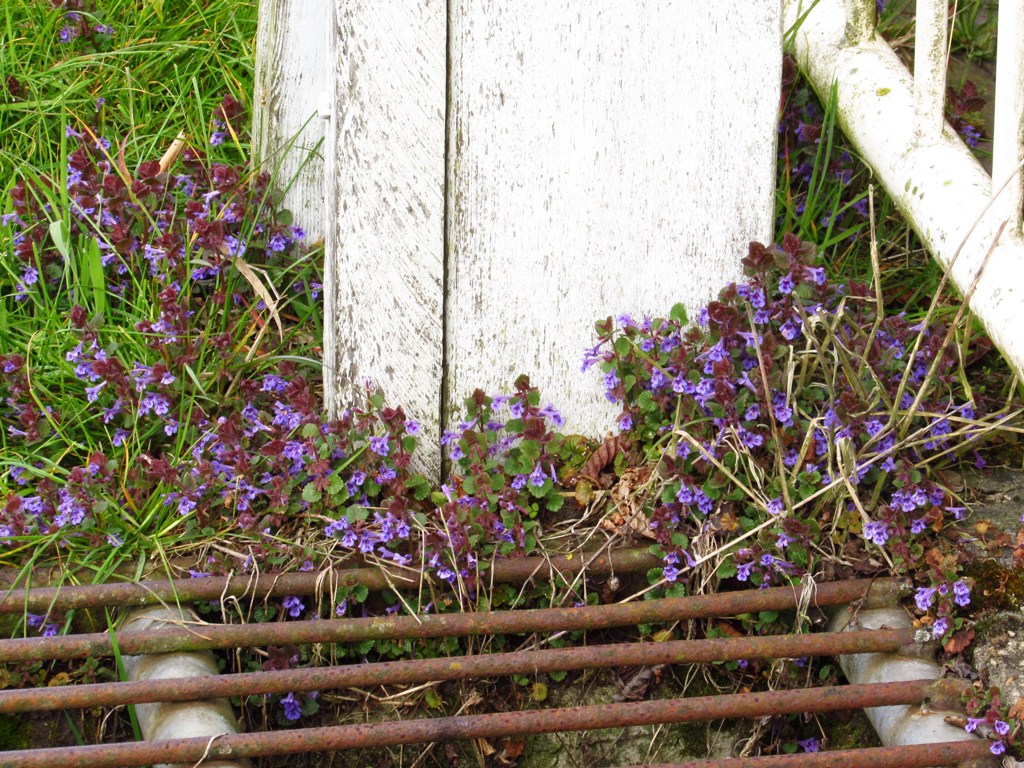
This week I cover genus 12-22 from Stace, split into two subfamilies, which does make sense if you look at the arrangements of the flowers:
SUBFAMILY 3: AJUGOIDEAE (Genus 12-13)
- 12) Teucrium or Germanders with 4 species
- 13) Ajuga or Bugles with 3 species.
SUBFAMILY 4: NEPETOIDEAE (Genus 14-27) (Some genera are missing as these are non natives)
- 14) Nepeta cataria or Catmint (archaeophyte)
- 15) Glechoma hederacea or Ground-ivy
- 16) Prunella or Selfheals with 1 possibly 2 native
- 19) Clinopodium or Calamints
- 21) Origanum vulgare or Wild Marjoram
- 22) Thymus or Thymes
The following plants are covered in part 3
- 23) Lycopus europaeus or Gypsywort
- 24) Mentha or Mints. This is a difficult taxa for classification due to widespread hybridisation . But according to Stace; ‘with practice the scent of fresh plants is very helpful, but difficult to describe!’ Many are native but many will be introduced as escaped garden plants of course.
- 27) From this large genus, Salvia or Sage, only 2 are native: S. pratensis or Meadow Clary and S. verbenaca or Wild Clary.
On the next page you can find the medicinal and other uses of these handsome weeds! Pictures by Matt Summers and very much grateful for all other + Wikipedia picture providers!! Blue background for general interest. Pink for medicinal uses. Most medicinal uses were found in Medicinal Flora. Green background for other uses and wildlife benefit. These were found mostly in PFAF and Wikipedia.
Teucrium or Germanders
There are 4 native species grown in the British Isles.
Teucrium scorodonia or Wood Sage
A bitter plant which is a stimulant for appetite & digestion. Nervine (nerve tonic). Emmenagogue & diuretic, astringent & antiseptic. Wound herb. Febrifuge (Presence of essential oil, tannins, flavonoids & saponins).
This plant is ornamental enough to be grown in your garden. The flowering period extends from June through August. These plants are mainly pollinated by Hymenoptera species.
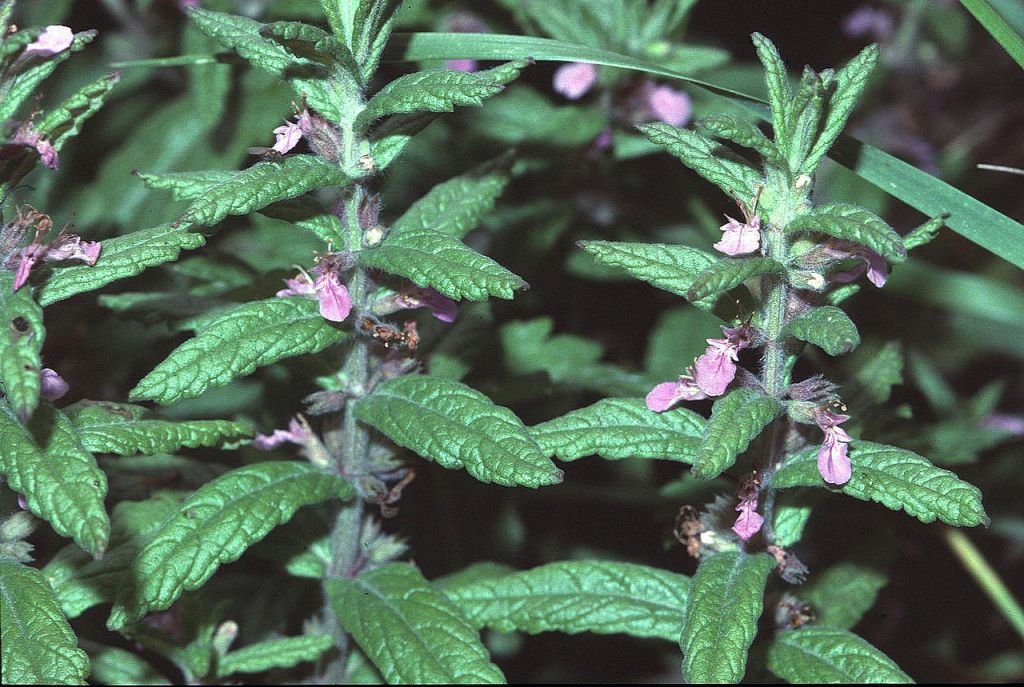
T. scordium or Water Germander
This is a rare plant in the B.I. Gentle aromatic bitter, beneficial for bronchiectasis.
A green dye is obtained from the leaves.
T. chamaedrys or Wall Germander
Attractive ornamental, evergreen edging plant.
Aromatic bitter and diaphoretic. Antimicrobial for internal and external wounds use.
The plant is widely used in making alcoholic drinks with a bitter base, which have digestive or appetite-promoting qualities
Ajuga or Bugles
Ajuga or Bugles: This has 3 native species in the B.I.
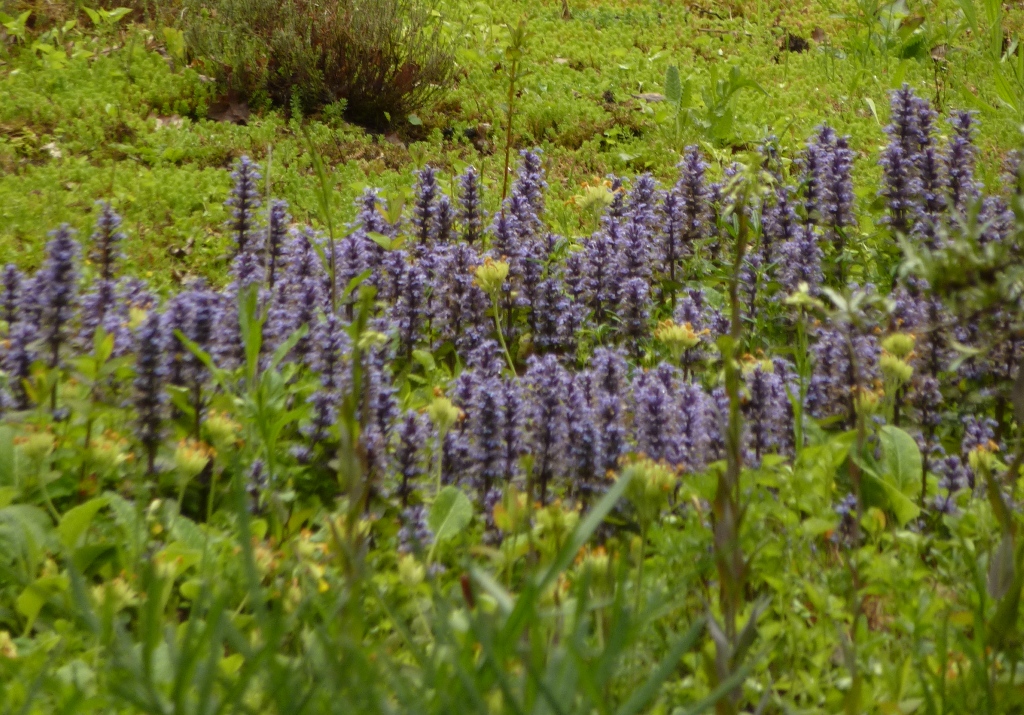
Ajuga reptans or Bugle
A ‘cure-all’ in the Middle Ages and now little used but may have cardiotonic properties?
An attractive plant for the woodland garden in dappled shade; shady edge; not deep shade; ground cover; meadow; bog garden.The Purple leaved Bugle needs more light and has attractive evergreen foliage.
The young leaves and shoots can be eaten raw.
An important nectar source for several butterflies.
Medicinal Action: Gentle Astringent, wound herb, anti-diarrhoeal, gargle for sore throats.
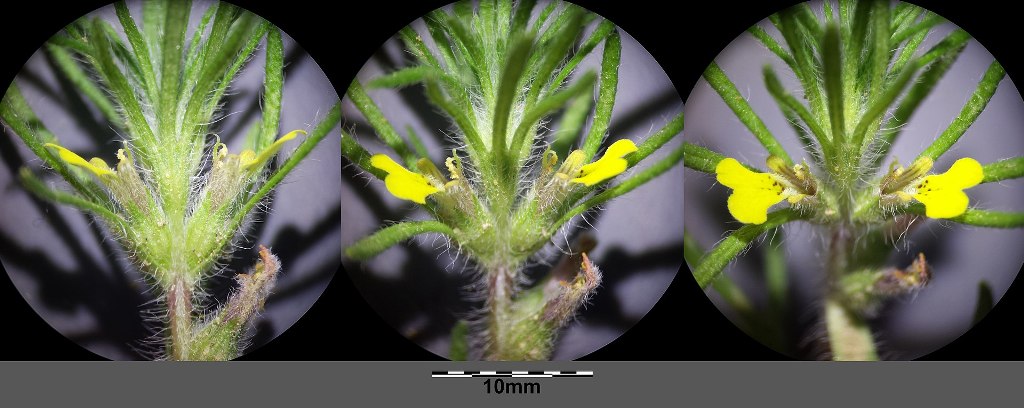
Ajuga chamaepitys or Ground-pine &

Ajuga pyramidalis or Pyramidal Bugle
These two other Bugles were both considered an emmenagogue, diuretic, relieving rheumatism & gout and for reducing cardiac oedema.
Nepeta cataria or Catmint
An archaeophyte, perennial herb of open grassland, waysides, hedge banks, roadsides and rough ground on calcareous soils.
The names catnip and catmint are derived from the intense attraction about two-thirds of cats have toward them.
In addition to its uses with cats, catnip is a popular ingredient in herbal teas (or tisanes), and is valued for its sedative and relaxant properties.
Nepeta cataria is cultivated as an ornamental plant for use in gardens. It is best grown in full sunlight and grows as a loosely branching, low perennial.
It can be a repellent for certain insects, including aphids and squash bugs
The plant is drought-tolerant and deer-resistant.
Culinary use: Rub on meat.
Good bee and butterfly plant.
Action: Diaphoretic (Aromatic febrifuge). Spasmolytic. Mild sedative/stimulant (depending on quality, oil contend & dosage). Carminative. Antidiarrhoeal. Uses: Flatulent colic in children. Nervous dyspepsia. The common cold. Tension headache.
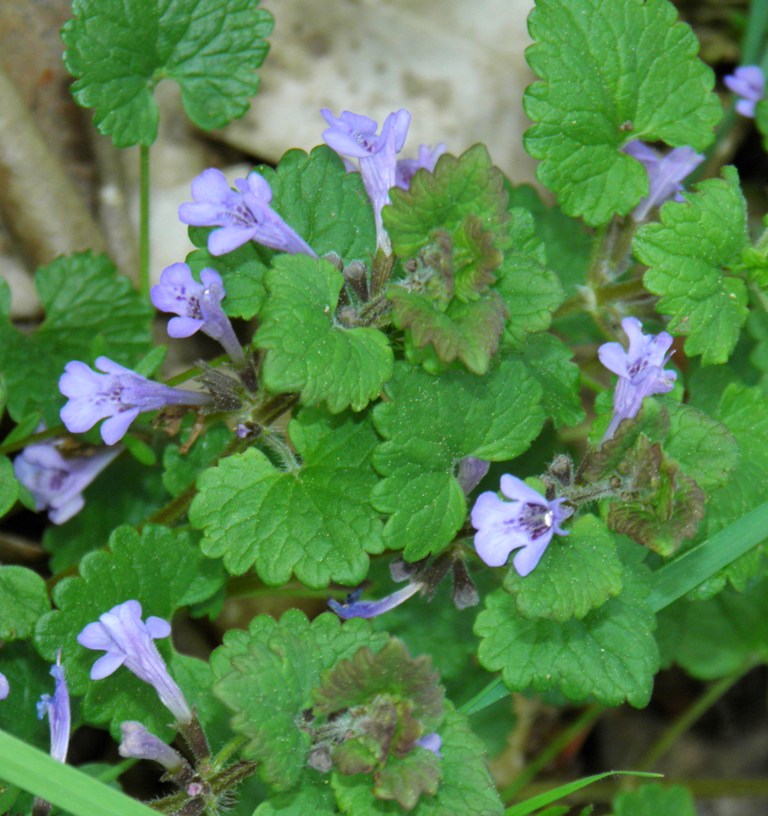
Glechoma hederacea or Ground-ivy
Glechoma hederacea or Ground-ivy, Glechon is Greek for Mint or Thyme. Hederacea = Ivy-like (creeps along ground like ivy).
An attractive plant which has many other common names. It also has an ornamentally used variegated form especially seen in hanging baskets, etc.
Glechoma was also widely used by the Saxons in brewing ale as flavoring, clarification, and preservative, and later by the English, before the introduction of hops into brewing which changed the ale into beer, in the late 15th century. Thus the brewing-related names for the herb of, alehoof, tunhoof, and gill-over-the-ground.
Glechoma has been used in the cheese-making process as a substitute for animal rennet
Action: Anticatarrhel. Mild expectorant. Vulnerary. Uses: Chronic bronchial and nasopharyngeal catarrh. Bronchitis. May be helpful towards treatment of asthma. Tinnitus. Recuperation from gastritis. Combines with a great number of remedies in the effective treatment of coughs.
Prunella vulgaris or Self-heal
Attractive little plant, though the Medicinal Flora had little known uses for it, apart from the following:
useful as a mouthwash or gargle for infections of throat and mouth. Haemostatic & antidiarrhoeal. Durraffourd considers it to have potential in the management of diabetes. It is also edible according to Wikipedia.
But a whole chapter has been covered in Hedgerow Medicine: ‘Self-heal has gained recent respect for its ant-viral qualities. Effective for feverish colds and flu, it has been proposed for treating herpes and AIDS, and is an underrated liver, gallbladder and thyroid remedy.’
It also says: ‘A close up of the flowers of self-heal helps us see how it came by some of its old names and uses. In medieval Europe, how a plant looked, or God’s ‘signature’, indicated how it should be used medicinally. Face-on, the corolla of self-heal resembles an open mouth with swollen glands, which suggested its value for treatment of throat problems.
In profile, there is a likeness to a bill-hook, giving a signature for treatment of cuts and wounds made by a sharp tool. Hence the old common names Sicklewort, Hook heal and Carpenter’s herb.’
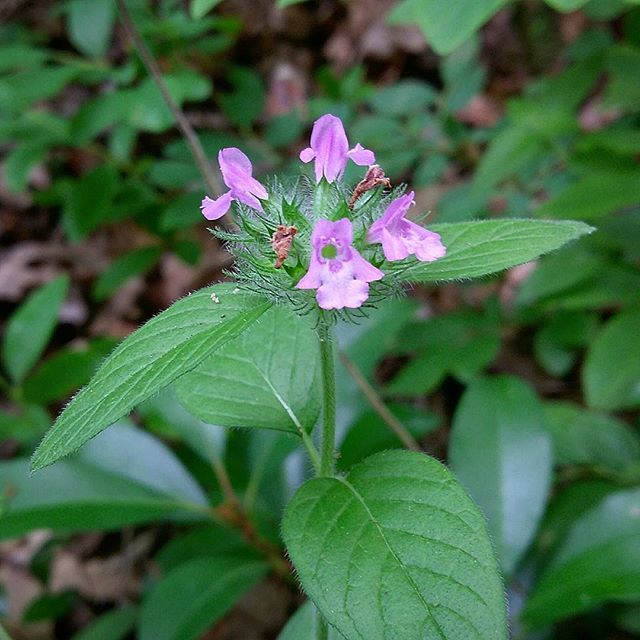
Clinopodium vulgare flowering stem: (Picture by Doppelbrau-Wikipedia)
Clinopodium vulgare or Wild Basil
Pretty, delicate flowering herb which is not much used medicinally today.
Edible leaves – used fresh or dried as a flavouring in cooked foods or fresh as a flavouring in salads. A sweet and aromatic herb tea is made from the fresh leaves.
Action: Powerful antimicrobial, presumably on account of its volatile oil and is recommended, like Marjoram, for secondary amenorrhoea and was used as stomachic and emmenagogue.
An infusion of the plant helps to overcome weak digestion.
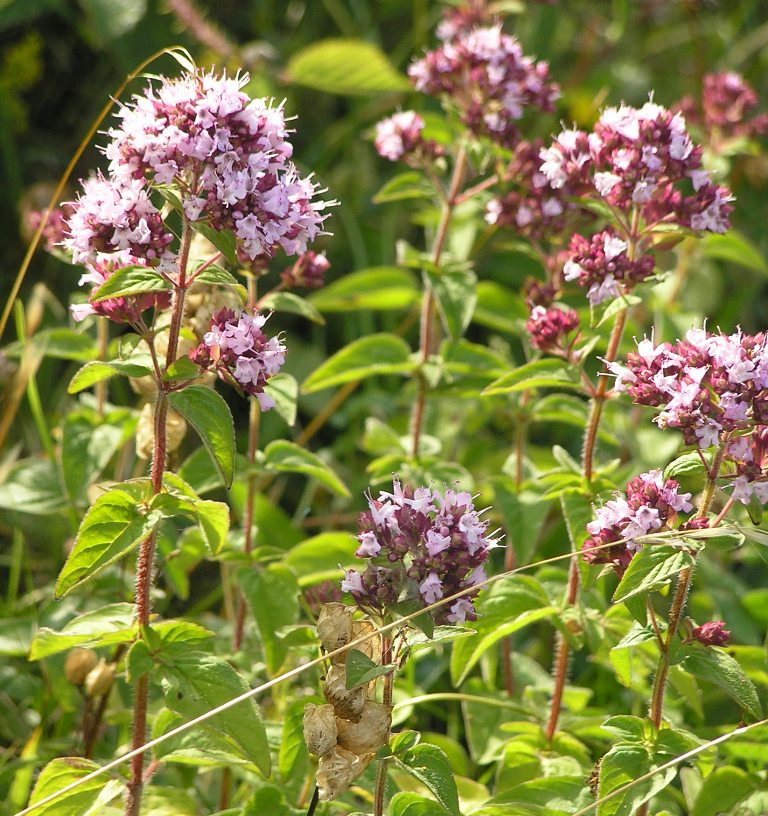
Origanum vulgare or Wild Marjoram
Oregano is a culinary herb, used for the flavor of its leaves, which can be more flavorful when dried than fresh. It has an aromatic, warm, and slightly bitter taste, which can vary in intensity.
Ornamental plant which also has several cultivars if the real species is not attractive enough!
Good plant for insects such as bees and butterflies.
highly priced herb by PFAF for both culinary amd medinal use!
Action and uses: Expectorant, antiseptic and antispasmodic for heavy coughs, including whooping cough. An excellent stomachic for colic and for intestinal infections. May be taken as an infusion or tincture. Also very useful when added to hot baths.
Thymus or Thymes
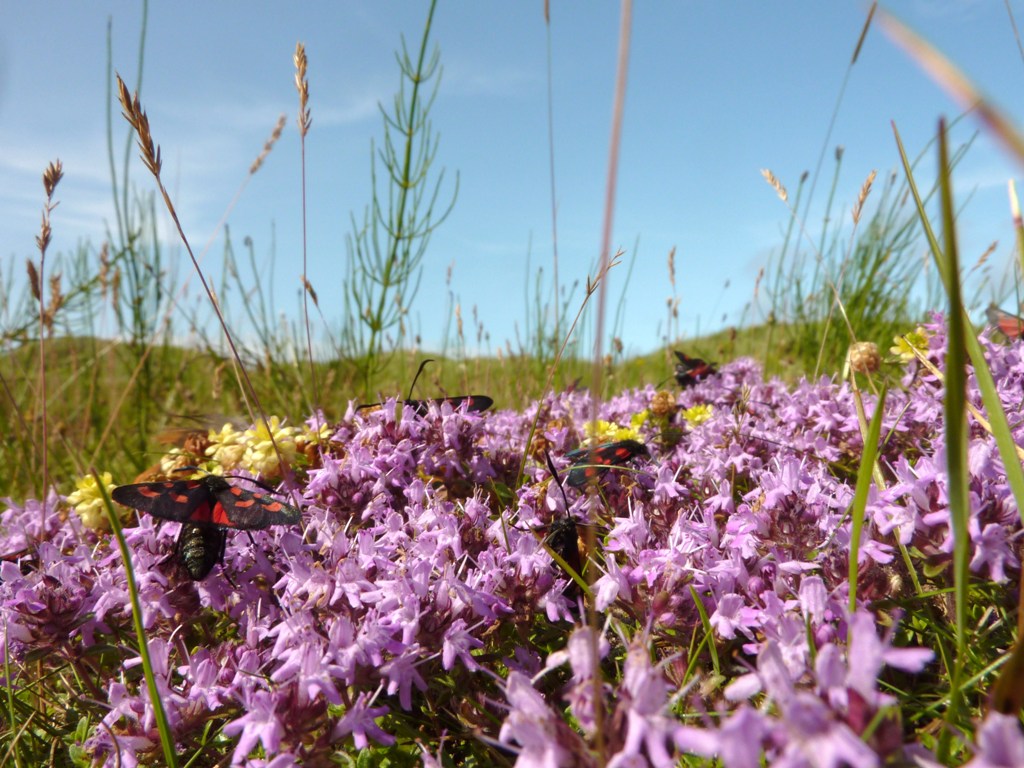
There are perhaps more than 70 species in Europe, most of them from the Mediterranean.
The best known Common or Garden Thyme is one of the most important culinary herbs and antiseptic remedies with extensive uses in resolving infections and inflammatory conditions of the respiratory and digestive tracts.
The uses of the native Creeping Thymes are generally the same as Common Thyme. The character of the essential oil is a little different as are the bitters and flavones. The oil can be blended with a suitable fixed vegetable oil and massaged to relieve sciatic pain. The herb is applied to the breast in mastitis and may be taken internally for painful periods.
The three native species mentioned in The Wildflower Key by Francis Rose are:
Thymus pulegioides subsp. pulegioides stem and flower detail (by Stefan Lefnaer Wikipedia)
Thymus pulegioides or Large Thyme
Large Thyme or Thymus pulegoides does not throw out runners and has elongated whorled flower spikes; it is more commonly found in areas with plenty of lime in the soil.

T. polytrichus or Wild Thyme
This one seems to be more common and more of a creeping habit than the above species.
T. serphyllum or Breckland Thyme
They are all very similar and are identified mainly by the amount of hairs on their square stems!
With my research on all these useful weeds I find interesting websites from all over the world.
Came across this lovely site called ‘the Transylvanian herb garden‘, which helps social integration of disadvantaged people in rural areas through collection and processing of medicinal and aromatic plants.
Presentation of the project
Beginning with May 2015 Civitas Foundation for Civil Society launched the project titled – Social integration of disadvantaged people in rural areas through sustainable collection and processing of medicinal and aromatic plants. The project is supported by a grant from Switzerland through the Swiss contribution to the enlarged European Union.
The objective of the 30-month-project is to help the social integration of disadvantaged people living in rural areas through transferring knowledge regarding collection and processing medicinal and aromatic plants, as well as to strengthen the partnership between Romanian and Swiss ONGs (= Non Government Organisations).
Targets of the project are:
• creating ONG- and community networks in order to facilitate and this way socially integrate
• sharing experience and knowledge about wildcrafting and sustainable processing of wild medicinal and aromatic plants
• promoting local economic activities and durable development
See for more here:
Next week I’ll finish the last part on Lamiaceae in the British Isles. Thank you for reading!



